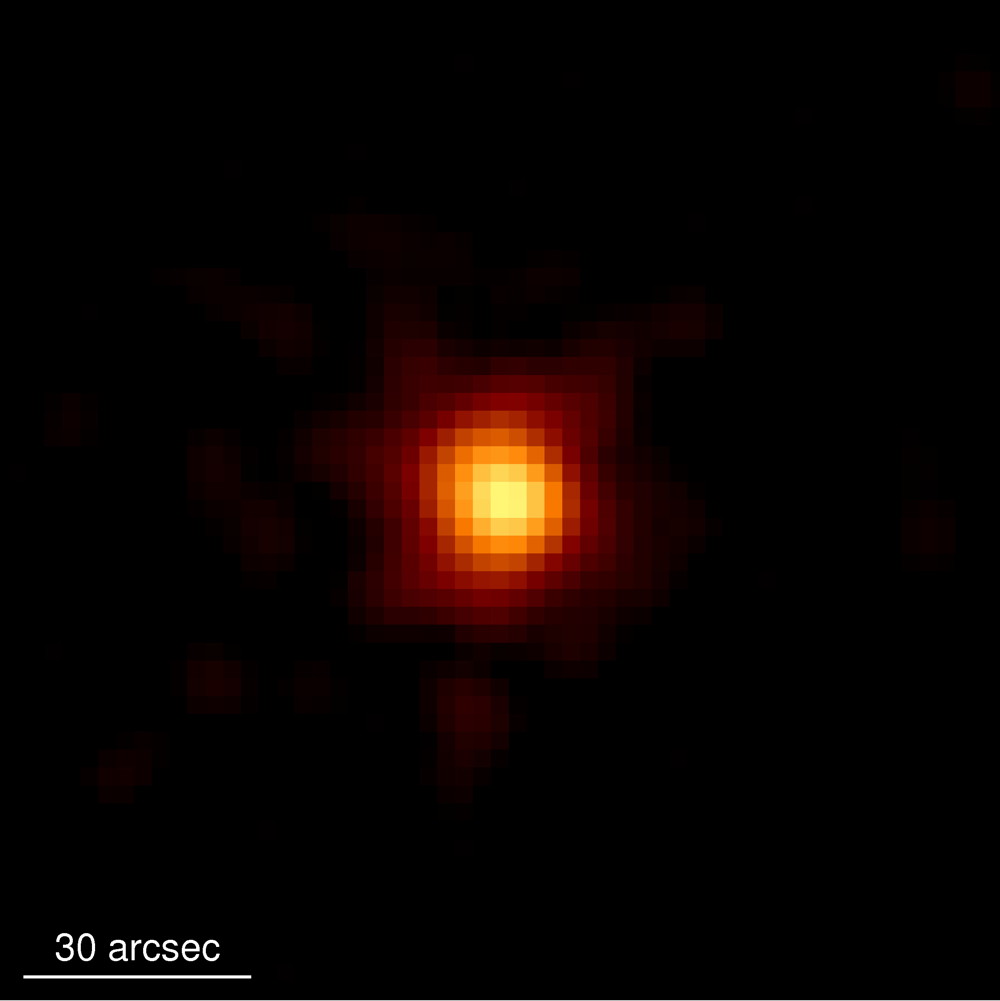Huge Space Explosion Is Farthest Thing Ever Seen

This story was updated at 3 p.m. ET.
BOSTON — A short, extremely bright explosion of light recently spotted in the night sky may be the most distant object ever seen in the universe, astronomers say.
Scientists can't be sure exactly how far away the so-called gamma-ray burst was, but their best estimates place it at around 13.14 billion light-years away, making it potentially the farthest object yet detected in space.
That would also mean the burst occurred when the universe was only 520 million years old, less than 4 percent its present age. The universe is now about 13.7 billion years old, scientists estimate.
The flash occurred when a star died in a supernova explosion and released a powerful jet of high-energy gamma-ray radiation. The blast shined for a mere 10 seconds but packed as much light as several thousand galaxies (more than a million million times the brightness of the sun). [Video: Brightest Flashes in the Universe?]
"By looking very far away, because the light takes so long on its journey to reach the Earth, astronomers are effectively able to look back in time to this early era," said astronomer Andrew Levan of the University of Warwick in England, one of the researchers on the team that studied the blast. "Unfortunately, the immense distances involved make this very challenging." [Top 10 Greatest Explosions Ever]
Faraway space explosion
Breaking space news, the latest updates on rocket launches, skywatching events and more!
The explosion was observed by NASA’s Swift satellite in April 2009, and it was named GRB 090429B. Though the initial blast lasted only about 10 seconds, the event left a fainter afterglow that was visible in the sky for days. Researchers observed this afterglow with the Gemini North telescope on Mauna Kea in Hawaii.
However, when they tried to take a precise measurement of the spectrum of light wavelengths emanating from the burst's afterglow, which would have provided a definitive measurement of its distance, clouds rolled in over the summit of Mauna Kea.
By the next night, the afterglow was too faint to yield a useful spectrum, and over the following nights it faded from view completely.
"It was frustrating to lose sight of this burst, but the hints we had were so exciting there was no chance of us letting it go," said the study’s leader, Antonino Cucchiara, who was a graduate student at Pennsylvania State University at the time and is now at the University of California, Berkeley.
Nonetheless, the researchers were able to learn enough to estimate that the explosion is very likely farther than any other gamma-ray burst known, and probably farther than even the most distant galaxies yet seen.
"If I were in Vegas, I would never bet against the odds that this is the most distant GRB ever seen, and we estimate that there is even a 23 percent chance that it is the most distant object ever observed in the universe," Cucchiara said in a statement.
The universe, piece by piece
The finding was announced today here at the 218th meeting of the American Astronomical Society in Boston.
By studying space explosions like this, astronomers are trying to better understand how gamma-ray bursts, the most powerful explosions in the universe, occur
"The key question we want to answer is, what is the exact mechanism that produced this gamma-ray burst?" Cucchiara said during a news conference today. "We don't know right now the exact mechanism."
Astronomers also hope to piece together a better picture of the history of the universe as a whole.
"The galaxy hosting the progenitor star of GRB 090429B was truly one of the first galaxies in the universe," said co-researcher Derek Fox, an astronomer at Pennsylvania State University. "Beyond the possible cosmic distance record, GRB 090429B illustrates how gamma-ray bursts can be used to reveal the locations of massive stars in the early universe and to track the processes of early galaxy and star formation that eventually led to the galaxy-rich cosmos we see around us today."
You can follow SPACE.com Senior Writer Clara Moskowitz on Twitter @ClaraMoskowitz. Follow SPACE.com for the latest in space science and exploration news on Twitter @Spacedotcom and on Facebook.

Clara Moskowitz is a science and space writer who joined the Space.com team in 2008 and served as Assistant Managing Editor from 2011 to 2013. Clara has a bachelor's degree in astronomy and physics from Wesleyan University, and a graduate certificate in science writing from the University of California, Santa Cruz. She covers everything from astronomy to human spaceflight and once aced a NASTAR suborbital spaceflight training program for space missions. Clara is currently Associate Editor of Scientific American. To see her latest project is, follow Clara on Twitter.
